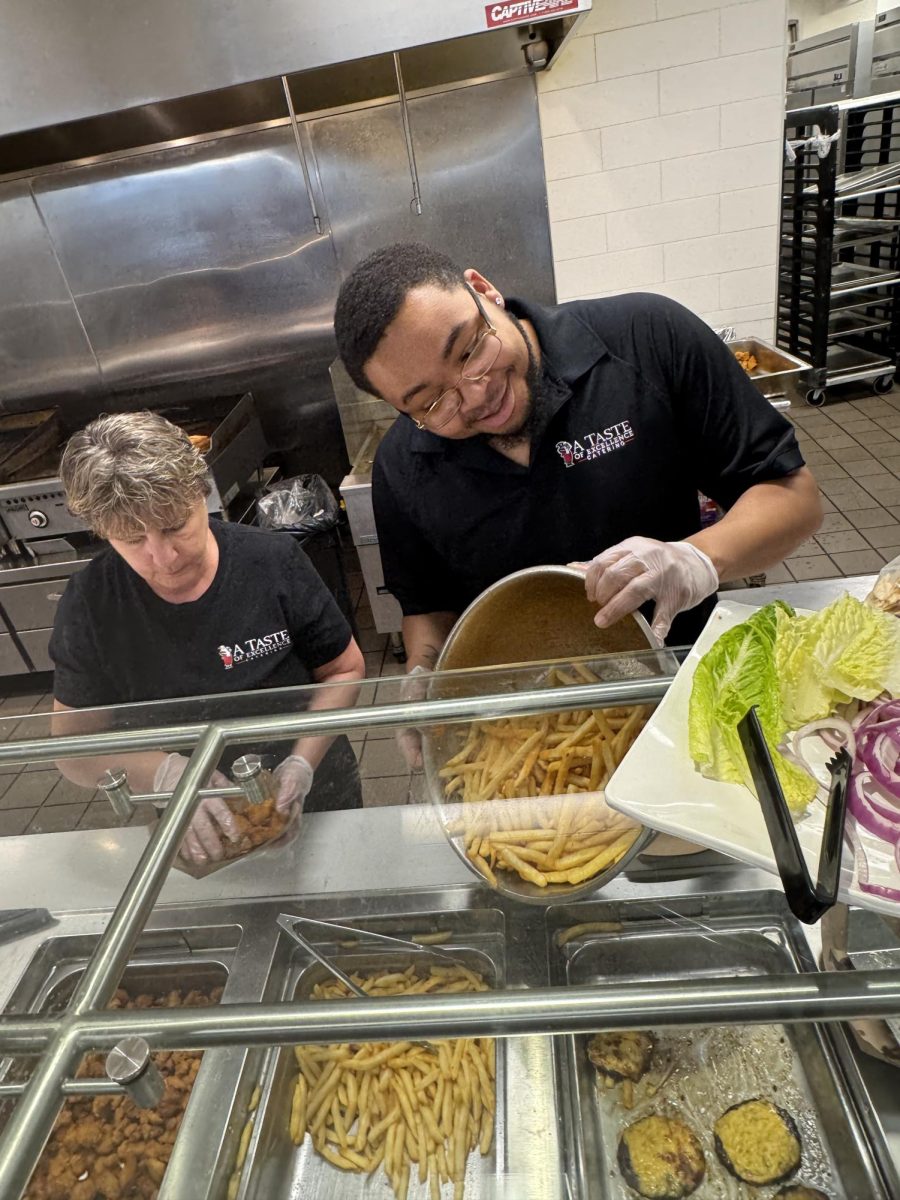¡Buen Provecho! These two simple words, which are essentially the Spanish version of “Bon Appétit!”, have created a sense of community and provided a deeper understanding of the Spanish culture for WJ students as they shared and enjoyed authentic Spanish food.
This quarter, students in Ms. Terri Aiken’s Spanish 4 and Spanish 4 CCP courses were given a group assignment, “La Comida Española.” For this special project, students were asked to work in pairs and make an authentic Spanish-inspired dish from scratch. That’s right, none of the food was allowed to be purchased – it had to be handmade. Each group was responsible for selecting a dish and researching its recipe, as well as researching the dish’s history and traditions. In total, students prepared about twenty-five different Spanish recipes that included appetizers (tapas), main dishes, and desserts.
Each group prepared their assigned recipe at the home of one of the members and recorded a “show and tell” video of their cooking experience. Each group then brought in their finished dishes and showed their videos to the class. To the delight of students, they were able to sample each dish after watching the presentation.

Some of the recipes were familiar and included churros, gazpacho, and paella. However, most of the dishes were not well-known to the students and provided them with the opportunity to experience a wide variety of Spanish food. This unique and immersive project offered a new and refreshing approach to the typical group project experience for students.
Profe Aiken, Ms. Aiken’s preferred title in class, developed the food project, which serves as a wrap-up for the introduction to Spain section of the course and helps students learn more about the importance of food in the Spanish culture. She discussed how this unique project has evolved since she introduced it in her classes over 20 years ago. She stated, “When I started this project, the food options consisted of popular Mexican dishes because the project was assigned at the end of the Mexico unit. When I came to Walsh Jesuit, I had to choose the food dishes related to the Spanish culture in order to fit the Spanish 4 curriculum.”
Profe Aiken added that the main purpose of the “La Comida Española” project is to create a sense of community among students in her classes. She enjoys watching her students learn and grow as a community through eating the authentic Spanish dishes prepared by their classmates.
Senior Maddy Herbele described her experience making albondigas, a type of Spanish meatball. She stated, “I was excited when I heard about the food project, but I was worried if the meatballs would taste good. A funny story is that my partner, Kate, and I ended up making 135 meatballs by mistake!”

James Chiera, another senior, recalled a humorous moment that occurred while preparing his group’s dish of Spanish meatballs. “When my partner and I were making our food, his dad was snoring on the couch in the background,” said James. After sampling the meatballs, James was surprised that they tasted so good and was eager to make the recipe again.
Senior Brady Catanzarite made fabada, which is sausage and bean stew. When the project was first announced, the part that scared Brady the most was “his partner’s inability to cook food.” In the end, his group’s dish was a success, and he felt that its spicy flavor represented Spanish culture the most.
Jack Maher ’25 summed up his positive experience with the project by stating, “In the beginning, I was excited for the assignment but nervous that it was going to be difficult. After presenting, I loved the project and hoped to do it again.”
There were a few dishes that stood above the rest after all the sampling was finished. Maddy stated, “My favorite dish was the tortilla Española. I have visited Spain, and I thought their dish tasted very similar to the food I sampled in Spain.”

However, students declared that the Spanish meatballs were the clear winner overall. Senior Janaki Austin noted, “The meatballs were very good because they had an amazing taste and smell.” Dawson O’Hara, another senior, agreed: “My favorite dish was the meatballs because they were seasoned well, and the sauce tasted good.” Alyse Favazzo ’25 also thought that the meatballs were the best dish that she sampled, adding that “the meatballs had a lot of flavor and were different from normal meatballs.”
By eating a small portion of each dish, students were exposed to Spanish food that they would likely never have had the opportunity to experience. Hopefully, the “La Comida Española” project in Profe Aiken’s classes will continue to be an annual tradition at Walsh Jesuit that allows students to celebrate Spanish food and culture.
Profe Aiken offered one final thought about understanding and being accepting of different cultures: “People are the same all over the world – they like to eat together and enjoy good food with their families and friends. If you walk in their shoes, they are NOT that different from you.”














Lisa Baylor • Dec 17, 2024 at 8:43 am
Wonderful article. What a fun project! I love the personal touch of gaining input from students about their experiences. Thank you.